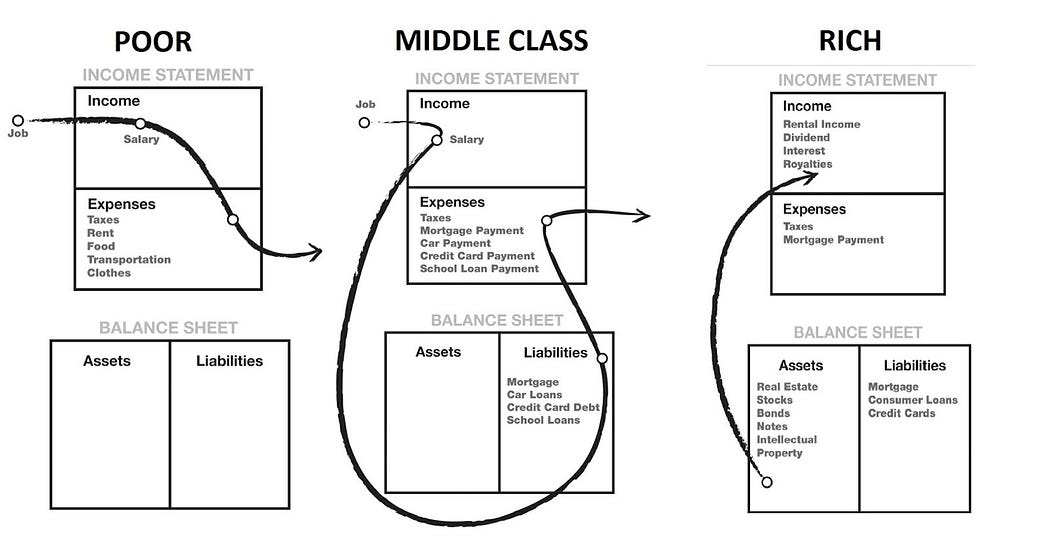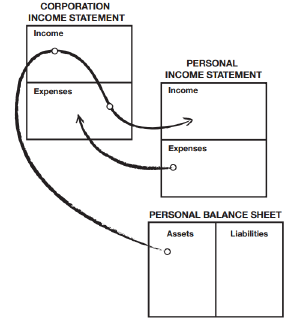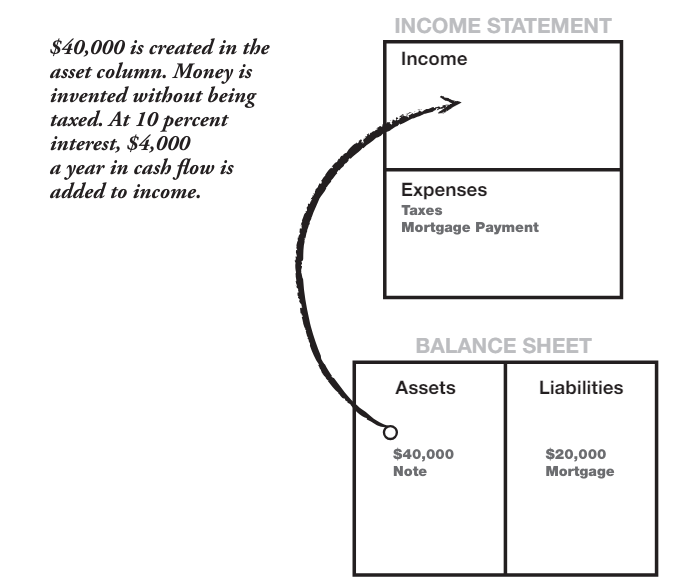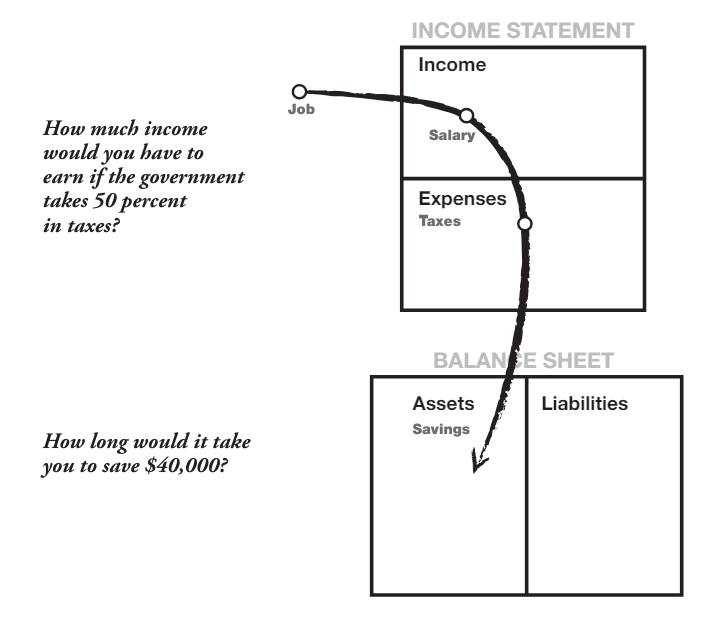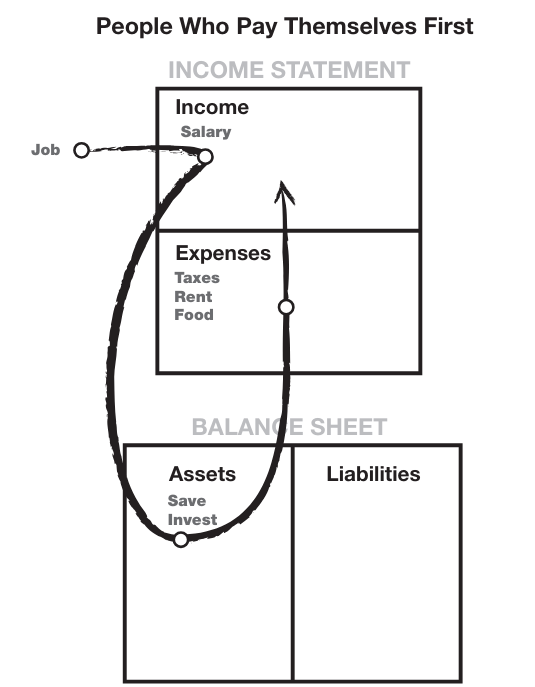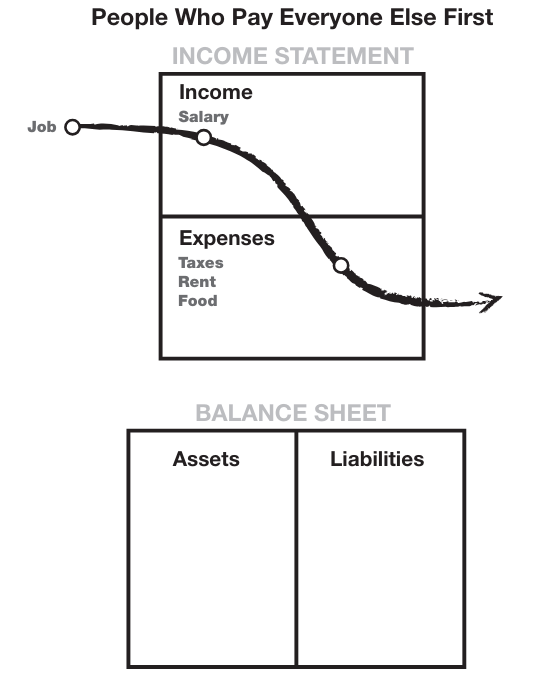by Debra Fine
A book that teach you how to overcome the fear of start a conversation, and how to delicately continue the talk, making others comfortable.
1. What’s the Big Deal about Small Talk
We become better conversationalists when we employ two primary objectives.
- Take the risk, starting a conversation with a stranger.
- Assume the burden. It’s our responsibility to come up with topics to discuss, to remember people’s name and to introduce them to others, to relive the awkward moments or fill the pregnant pause.
2. Get over Your Mum’s Good Intentions.
- In safe situations, make it a point to talk to strangers. Start it!
To expand your circle of friends and colleagues, you must start engaging strangers and acquaintances in conversation. There is no other way. Strangers have the potential to become good friends, long-term clients, valued associates, and bridges to new experiences and other people. Start thinking of strangers as people who can bring new dimensions to your life, not as persons to be feared.
-
Introduce yourself.
People expect you to mingle on your own, introduce yourself, and take the initiative to get acquainted.
-
Silence is impolite
Start to talk, silence is not golden.
Don’t risk being taken as haughty or pretentious by keeping silent; it can cost you dearly. Start small talking and let others see your personality. You know how much you appreciate the efforts others put forth in conversation. Make the same effort. Contrary to what your elders taught you, silence is not golden.
-
Good things come to those who go get them!
Don’t spend another minute thinking that if you just keep waiting, interesting people will introduce themselves.
We end up paying twenty pounds to attend an event and then seek out people we already know because it’s less threatening. Yet the purpose of the event was to make new contracts.
-
It’s up to you to start a conversation
When you walk into a luncheon or a cocktail party, more people there are scared to death to talk to you. Fear of rejection keeps many of us from risking conversation, but the probability of rejection is actually quite small.
You will be the hero if you start the conversation. You will gain stature, respect, and rapport if you can get the conversation going.
-
It’s up to you to assume the burden of conversation
You cannot rely on the other person to carry the conversation for you. One-word answers to questions do not count as shouldering your share of the burden.
To become a great conversationalist becoming invested in the conversation and actively working to help the other person feel comfortable.
Ask icebreaker questions. Such as “What do you do for a living?”
3. Take the plunge: Start a conversation!
When someone gives you a smile, you are naturally inclined to smile back. Be the first to smile and greet another person. Just a smile and a few words, and it’s done. Be sure that you make eye contact. That simple act is the beginning of establishing rapport.
Mingle with the people in the audience, making a personal connection with as many as possible.
The best way to get people comfortable enough to open up and express themselves was to look them in the eye and ask “What’s your name?” Making eye contact and placing the emphasis on the word your, rather than the word “name”, signaled to the person that they were important.
- What’s in a name?
Learning and using names is probably the single most important rule of good conversation.
Focus on the name, repeat it, and then formulate your answer.
Don’t go through the while conversation pretending you know the person’s name. Say something like “Excuse me, I’m not sure I got your name”. It’s always preferable to have the other party repeat it than to fake it. Never, ever fake it!
Individuals with foreign or unusual names get slighted more than the rest of us. Make it a point to learn the proper pronunciation, even if it means that the other person repeats it a few times.
Learning names is part of hosting the conversation. A host is always expected to know and use every person’s name, since the host is responsible for making introductions as new individuals enter the conversation.
Acting as the host puts everyone at ease and creates an atmosphere of warmth and appreciation that naturally encourages conversation. It also positions you as a leader in the group.
-
It’s better to give than to receive.
Give your name when you meet someone. Extend your hand. “Hi XX. Fanyu Zhao. How are you?” By stating my name.
4. Keep the conversation going!
Instead of sitting back and waiting for another kind soul to start a conversation, take the lead. Try to make your guest as comfortable as possible.
The approachable person is the one who makes eye contact with you and who is not actively engaged in a conversation or another activity such as reading a newspaper or working at a computer.
Not only are icebreakers a good way to start conversation, but some of the statements are accompanied by questions you can ask to keep the ball rolling. Don’t use a statement alone. Using a statement by itself is like lobbing the conversational ball blindfolded, not knowing where it will land or whether it will get tossed back.
- Tips for Starting with a Conversation
- What a beautiful day. What’s your favorite season of the year?
- I was truly touched by that movie. How did you like it? Why?
- This is a wonderful restaurant. What is your favorite restaurant? Why?
- What a great conference! Tell me about the sessions you attended.
- I was absent last week. What did I miss?
- That was an interesting program after lunch. What did you think?
- Presidential campaigns seem to start immediately after the inauguration. What do you think of the campaign process?
- I am so frustrated with getting this business off the ground. Do you have any ideas?
- • I am excited about our new mayor. How do you think her administration will be different from her predecessor’s?
- Your lawn always looks so green. What is your secret?
- We’ve been working together for months now. I’d like to get to know you better. Tell me about some of your outside interests.
- You worked pretty hard on that stair stepper. What other equipment do you use?
- You always wear such attractive clothes. What are your favorite stores?
- What a beautiful home. How do you manage to run a house with four children?
- I read in the newspaper that our governor has taken another trip overseas. What do you think of all his travel?
- Easy Openers: You will be successful if you just take the initiative and give it a try. You’ll be surprised by how easy it is and at the positive reinforcement you get from people when you start a conversation. Remember the following four steps and you are well on your way to an excellent chat.
- Make eye contact.
- Smile.
- Find that approachable person!
- Offer your name and use theirs.
- Break into a group of five conversation:
- Show interest in the speaker, but stand slightly away from the group. A group this size is slow to warm, so first let them become accustomed to seeing you. Slowly, they will shift to bring you into the circle.
- Ease into the group by demonstrating that you’ve been listening. Look for welcoming signs such as them asking your opinion or physically shifting positions to better include you.
- Initially, it is best to find a point of agreement; barring that, just acknowledge the speaker. Wait before rocking the boat with a big wave of radical opinions. Before offering your views, let the group warm to you. If you come on too strong too fast, the group will resent your intrusion and disband. Then you have to start all over again, looking to chat with someone you haven’t just offended!
5. Let’s Give ’Em Something to Talk About
Your mission is to get your conversation partners talking about themselves. Most people enjoy the opportunity to share their stories, and if you give them the chance, they’ll start talking. This is a no-brainer route to small talking success.
- Asking.
By asking open-ended questions, you offer your conversation partner the opportunity to disclose as much or as little as she wants. These questions demand more than a simple yes or no answer, yet they make no stressful demands.
-
Digging Deeper
After asking the greeting type question such as “How are you?”, follow up with deep question.
These everyday inquiries are just a few other ways of saying hello. It’s almost universally understood that these questions are a form of greeting, not a sincere inquiry.
Digging in deeper indicates you truly desire a response and are prepared to invest time in hearing the response.
Dig in deeper based on your observation.
6. Hearing Aids and Listening Devices
Scientific research has shown that people are capable of listening to approximately 300 words per minute. On the flip side, most of us can only speak at 150 to 200 words per minute.
The dilemma is that we have the capacity to take in much more information than one person can divulge at any given time.
Attentive listening has three parts: visual, verbal, and mental. Combine these elements, and powerful listening results.
- Listening is seen, not just heard
Listening is more than just hearing. In a normal two-person conversation, verbal components carry less than 35% of the social meaning of the situation, while nonverbal components account for over 65%. It’s critical to maintain eye contact when you are listening to another person.
Gestures show what the counterpart’s attitude.
-
Verbalise your listening
There are numerous verbal cues to let the speaker know you are fully engaged in the conversation. These brief comments tell the speaker that you are interested and want to know more. You can use verbal cues to show that you have a positive response, that you disagree, or that you want to hear more about something in particular.
| If you want to show that you are: | Say: |
|---|---|
| Interested in hearing more … | Tell me more. What was that like for you? |
| Taking it all in… | Hmmm, I see … |
| Responding positively… | How interesting! What an accomplishment! |
| Diverging… | On the other hand, what do you think … ? |
| Expanding on the idea… | Along that same line, do you … ? Why? |
| Arguing/refuting… | What proof do you have of that? |
| Involving yourself … | Could I do that? What would it mean to me? |
| Clarifying … | I’m not sure I’m clear on your feelings about… |
| Empathising… | That must have been tough/frustrating, et cetera. |
| Probing… | What do you mean by that? How were you able to manage? |
| Seeking specifics… | Can you give me an example? |
| Seeking generalities… | What’s the big picture here? |
| Looking to the future… | What do you think will happen next? |
| Reviewing the past… | What happened first? |
| Seeking likenesses / differences | Have you ever seen anything like this? What’s the opposing point of view? |
| Seeking extremes / contrasts | What’s the downside? / What’s the optimum? |
Other verbal listening cues function to redirect the conversation by transitioning to another topic. Examples of cues that offer a seamless segue include:
- That reminds me of…
- I’ve always wanted to ask you…
- I thought of you when I heard…
- Do you mind if I change the subject?
- There’s something I’ve wanted to ask of someone with your expertise.
All these verbal cues indicate that you are fully present. Just as important, these cues encourage others to continue speaking. Imagine someone asks you a question, and you respond with a one-sentence answer. You are uncertain as to how much information they are truly interested in learning. Added verbal cues as you respond assure you that their interest is sincere.
- Tips for Tip-Top Listening
- Learn to want to listen. You must have the desire, interest, concentration, and self-discipline.
- To be a good listener, give verbal and visual cues that you are listening.
- Anticipate excellence. We get good information more often when we expect it.
- Become a **“whole body” listener: Listen with your ears, your eyes, and your heart. **
- Take notes. They aid retention.
- Listen now, report later. Plan to tell someone what you heard, and you will remember it better.
- Build rapport by pacing the speaker. Approximate the speaker’s gestures, facial expressions, and voice patterns to create comfortable communication.
- Control internal and external distractions.
- Generously give the gift of listening.
- Be present, watch the tendency to daydream. Don’t drift off from conversations.
7. Prevent Pregnant Pauses with Preparation
- Do not let old acquaintances be forgotten
Seek out what’s new and keep the conversation rolling with questions. Like…
- Bring me up to date on . . .
- What’s been going on with work since I last saw
you? - What has changed in your life since we spoke last?
- How’s your year been?
But do not ask about other’s wife / jobs / children, if you do not know the person well
-
Preparing for the long haul
When there is nothing to talk about! Here are
some examples of interviewing questions you can customise to fit your own personality: (the book gives the following examples)- What do you enjoy most about this season of the year?
- What got you involved in this organisation/event?
- If you weren’t here, what would you be doing at this very moment?
- If you could meet any one person, whom would you choose?
- Tell me about an issue that matters a great deal to you.
- What has been your most important work experience?
- Limelight Etiquette
First, disclose information about yourself that is comfortable and uncontroversial. Lead with easy, positive, and light information. Building trust and intimacy over time creates friendships. Having a conversation is a little like peeling an onion—you want to proceed in layers, matching the level of intimacy shared by your partner.
You aren’t limited to talking about events and experiences. You can share feelings, opinions about books you’ve read, restaurants you’ve visited, and movies you’ve seen.
Speak no evil: Barring exceptional circumstances, avoid these often controversial topics that can stop a conversation in its tracks:
- Stories of questionable taste
- Gossip
- Personal misfortunes, particularly current ones
- How much things cost!
- Controversial subjects when you don’t know where people stand
- Health (yours or theirs). The exception is when you’re talking with a person who has an obvious new cast, crutches, or bandage. In that situation, the apparent temporary medical apparatus is free information. If you skirt the issue, it’s a bit like having an elephant in your living room and ignoring it.
When in doubt, leave it out. Avoid any area that is likely to offend your conversation partner
Conversation Clout
-
Can you spell your name for me? Most of us know how to spell our names, we do not need to be asked first if we know how!
Instead: Please spell your name for me.
-
If I can find out … A low expectation is established when you use the word if. Raise expectations. Instill confidence.
Instead: I will look into this and get back to you one way or the other.
-
I’m only the… Everyone’s role or job is important. This is demeaning to oneself. Define the capabilities and responsibilities in
your area of expertise.Instead: My responsibilities are focused on Website development. I will be glad to check with sales about your order.
-
I can’t meet with you this morning. This projects an unwillingness to deliver the best possible outcome. Or it projects a burden. In either
case say what you can do, not what you cannot.Instead: I can be there by three this afternoon.
-
I’ll try to get this back to you this week. The word try conveys the underlying message that this is not something that is dependable.
Instead: I’ll get to you no later than next week.
Tell people what you will do, not what you hope to do. -
You’ll have to call me tomorrow. This is a busy time for me. This sounds like a person giving orders and placing another burden on my already heavy load! And I don’t like to be bossed around.
Instead: *You can call me tomorrow. That’s a better time for me.
No say no, but say what you can.
9. Crimes and Misdemeanours
-
Don’t be interpreter.
Do not interpret. The interrupter is
characterised by high drive, determination to make her point, and a lack of patience.There are only three good reasons for interrupting. The first is that you need to exit immediately. The second is that the topic of conversation is too uncomfortable to bear, and you need to change the subject right away. And the third is if you are in the company of a monopoliser who has refused to offer you a natural break in the conversation for more than five minutes.
10. The Graceful Exit
There are ways to artfully exit a conversation that leave the other person’s ego intact. I find that many people remain in a conversation longer than they should for two reasons: they feel trapped, especially if it’s just a two-person dialogue, or they are so comfortable that they don’t want to leave.
- When you prepare to depart a conversation, recall why you originally connected with your conversation partner and bring the conversation back to that topic.
For example:
Tom, (1) it’s been wonderful talking with you about the changes impacting the health-care industry. (2) I need to catch up with another client before she leaves. (3) Thanks for sharing your expertise.
Notice that the author didn’t make excuses for my leaving. The author didn’t say I had to call the babysitter or that I needed to return a page. That well-known adage “honesty is the best policy”
You clearly state that the reason you are leaving the conversation is that you need to do something. There is no mistaking the fact that you have a specific agenda that you are trying to accomplish.
-
A Little Appreciation goes a long way
Ending a conversation by showing appreciation for the interchange provides an upbeat way to leave on a positive note. Thanking others for their time, expertise, or the sheer joy of the conversation is always welcome.
Remember to end the conversation the same way you began it—with a smile and a handshake. Even if you have to get up and walk around the table to do this, make sure you do. You make a lasting impression when you seal a conversation with a handshake.
-
Parting is such sweet sorrow
If you’ve met someone with whom you’d like to further a relationship, the best way to exit is to ask to see him again.
11. The conversational Ball is in your court!
A cheat sheet of tips here. Take the risk and assume the burden, and do start to talk.
Fifty Ways to Fuel a Conversation
- Be the first to say hello.
- Introduce yourself to others.
- Take risks and anticipate success.
- Remember your sense of humour.
- Practice different ways of starting a conversation.
- Make an extra effort to remember people’s names.
- Ask a person’s name if you’ve forgotten it.
- Show curiosity and sincere interest in finding out about others.
- Tell others about the important events in your life. Don’t wait for them to draw it out.
- Demonstrate that you are listening by restating their comments in another way.
- Communicate enthusiasm and excitement about your subjects and life in general.
- Go out of your way to try to meet new people wherever you are.
- Accept a person’s right to be an individual with different ideas and beliefs.
- Let the natural person in you come out when talking with others.
- Be able to succinctly tell others—in a few short sentences—what you do.
- Reintroduce yourself to someone who is likely to have forgotten your name.
- Be ready to tell others something interesting or challenging about what you do.
- Be aware of open and closed body language.
- Smile, make eye contact, offer a handshake, and go find the approachable person.
- Greet people that you see regularly.
- Seek common interests, goals, and experiences with the people you meet.
- Make an effort to help people if you can.
- Let others play the expert.
- Be open to answering common ritualistic questions.
- Be enthusiastic about other people’s interests.
- See that the time is balanced between giving and receiving information.
- Be able to speak about a variety of topics and subjects.
- Keep up to date on current events and issues that affect our lives.
- Be willing to express your feelings, opinions, and emotions to others.
- Use “I” when you speak about your own feelings and personal things, rather than “you.”
- Visually show others that you are enjoying your conversation with them.
- Be ready to issue invitations to others to join you for other events/activities to further the relationship.
- Find ways to keep in touch with friends and acquaintances you meet.
- Seek out others’ opinions.
- Look for the positive in those you meet.
- Start and end your conversations with the person’s name and a handshake or warm greeting.
- Take the time to be friendly with your neighbours and coworkers.
- Let others know that you would like to get to know them better.
- Ask others about things that they have told you in previous conversations.
- Listen carefully for free information.
- Be ready to ask open-ended questions to learn more.
- Change the topic of conversation when it has run its course.
- Always search for the things that really get another excited.
- Compliment others about what they are wearing, doing, or saying.
- Encourage others to talk to you by sending out positive signals.
- Make an effort to see and talk to people you enjoy.
- When you tell a story, present the main point first and then add the supporting details.
- Include everyone in the group in conversation whenever possible.
- Look for signs of boredom or lack of interest from your listener.
- Prepare ahead of time for each social or business function.
12. Make the most of networking events!
Do you dread receptions, banquets, and other business-related social events? Does attending another open house make you want to run inside your own and lock the door? You’re not alone. Many of us are apprehensive about these situations, because most of us either hate entering rooms where we don’t know anyone or hate spending time with people we don’t know well. Keeping a conversation going during such occasions is an ordeal.
But for business professionals, these occasions represent opportunities to develop business friendships and broaden our networks. Whether you realise it or not, networking happens all the time.
Everyone learns the technical skills required for their jobs, but not everyone places importance on conversational skills. The ability to talk easily with anyone is a learned skill, not a personality trait. Acquiring it will help you develop rapport with people and leave a positive impression that lasts longer than an exchange of business cards.
- A few tips:
- Be the first to say hello!
- Introduce yourself. Act as if you’re the host and introduce new arrivals to your conversation partner or partners.
- Smile first and always shake hands when you meet someone.
- Take your time during introductions! Make an extra effort to remember names, and use them frequently in the conversation.
- Maintain eye contact in any conversation. Many people in a group of three or more look around in the hope that others will maintain eye contact on their behalf. Yet people don’t feel listened to if you’re not looking at them.
- Get somebody to talk about why they’re attending the event. You are now on your way to engaging them in conversation.
- Show an interest in every person. The more interest you show, the more wise and attractive you become to others.
- Listen carefully for information that can keep the conversation going.
- Remember, people want to be with people who make them feel special, not people who are “special.” Take responsibility to help people you talk to feel as if they’re the only person in the room.
- Play the conversation game. When someone asks How’s business? or What’s going on? answer with more than Not much. Tell more about yourself so that others can learn more about you.
- Be careful with business acquaintances. You wouldn’t want to open a conversation with: How’s your job at? What if that person just got fired or laid off? Be careful when you’re asking about an acquaintance’s spouse or special friend; you could regret it.
- Don’t act like you’re an FBI agent. Questions like What do you do?, Are you married?, Do you have children?, and Where are you from? lead to dead-end conversations.
- Be aware of body language. Nervous or illatease people make others uncomfortable. Act confident and comfortable, even when you’re not.
- Be prepared. Spend a few minutes before an anticipated event preparing to talk easily about three topics. They will come in handy when you find yourself in the middle of an awkward moment . . . or while seated at a table of eight where everyone is playing with their food.
- Show an interest in your conversation partner’s opinion, too. You’re not the only person who has opinions about funding the space program or what will happen to the stock market.
- Stop conversation monopolists in their tracks. If possible, wait for the person to take a breath or to pause, then break in with a comment about their topic. Immediately redirect the conversation in the direction you wish it to go.
- Be prepared with exit lines. You need to move around and meet others.
- Don’t melt from conversations. Make a positive impression by shaking hands and saying good-bye as you leave.
13. Surviving the singles scene
- Don’t think of what you’re doing as “singles” socialising. Just think of it as networking.
You have something to offer others, and they have something to offer you: connection to humanity.
-
You don’t have to make small talk immediately upon entering.
Stand in the doorway and survey the scene. This accomplishes two things: You get a moment to stabilize yourself and get your bearings, and you are framing yourself for everyone to see; they will perceive you as a selfconfident person and unconsciously hope for the chance to speak with you. Self-confidence is probably the single most powerful magnet, right after good looks.
-
Follow up the conversation.
With creative usage of these three elements (questions, follow-up comments, follow-up questions), the possibilities and variations in conversation are virtually limitless. As long as you stay focused on the conversation, you can keep it going.
15. Feel-Good Factor
Here’s how to build rapport that leads to success in every business relationship.
- Use small talk as a picture frame around business conversations. Begin and end with small talk when making a presentation to a client, selling a widget, negotiating a contract, providing a service, or conferencing with your child’s teacher. A study conducted with physicians showed those who spend a few minutes asking patients about their family, their work, or summer plans before and/or after an examination are less likely to be sued than those who don’t.
People don’t sue people they care about. And we care about people who show they care about us.
-
Express empathy. Everyone is entitled to be listened to, even when in the wrong. Consider the client who sees the stock market rise 30 percent but not his own portfolio. The stockbroker knows the client insisted on picking the stocks himself, but it would be a mistake to make the client “wrong.” It’s better to say, I realize it’s frustrating to experience this. What can we do from here? That goes a long way to defusing negative emotions and helping the client feel better about this relationship—rather than tempted to move on to another stockbroker.
-
Greet people warmly, make eye contact, and smile. Be the first to say hello. Be careful, you might be viewed as a snob if you are not the first to say hello. People often go back to their favourite restaurants because the host greets them with a sincere smile, looks at them directly, and welcomes them with warmth.
-
Use the person’s name in conversation. You are more likely to get special treatment by using the person’s name. If you don’t know someone’s name, take a moment to ask, and then repeat it. Be sure to pronounce it correctly. And never presume your conversation partner has a nickname. My name is Debra, not Debbie. I don’t feel good when people call me Debbie. It’s a little thing that has big importance.
-
Show an interest in others. In response to our high-tech environment of e-mail and fax broadcasts, we need “high touch” more than ever. That’s what you create when you show an interest in the lives of your customers/clients/patients every chance you get.
-
Dig deeper. When you engage in a conversation, don’t leave it too quickly. If your customer / client / patient mentions her vacation, pick up on the cue and dig deeper. Ask where she went, what she did, what the highlight was, if she would go back. You’ll make her feel good about her life and about taking time with you.
Always follow up a question like How’s work? with What’s been going on at work since the last time we spoke? This way he or she knows you really want to hear about what is going on with work.
-
Be a good listener. That means making eye contact and responding with verbal cues to show you hear what the speaker says.
Verbal cues include the phrases: Tell me more, What happened first?, What happened next?, That must have been difficult, and so on. Using them makes people feel actively listened to.
-
Stop being an adviser. When you mention a problem you might be having with an employee or an associate, do people offer advice without asking any questions? Have you ever put together a résumé and, as soon as you sent it out, someone told you it was too long or too short or too detailed or not detailed enough? Jumping in with unsolicited advice happens annoyingly often. Instead of advice, give understanding with simple phrases like I know you can work out a solution or I hope the job hunt goes well for you. Offer advice only when you are specifically asked for it.
People say something does not mean they are asking for an advice. Probably, people are just want to speak, and want you to listen. So, do not give advice if people is not asking for.
